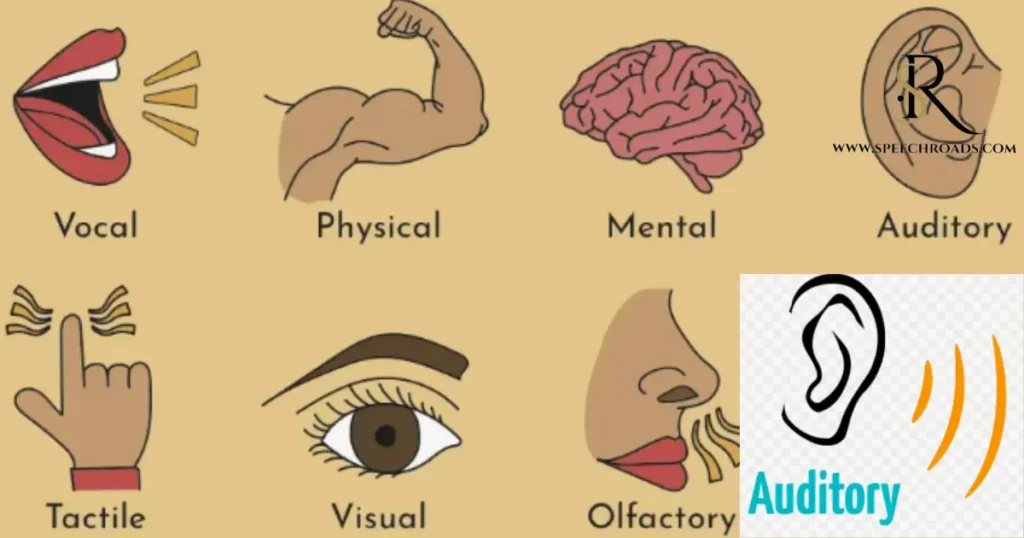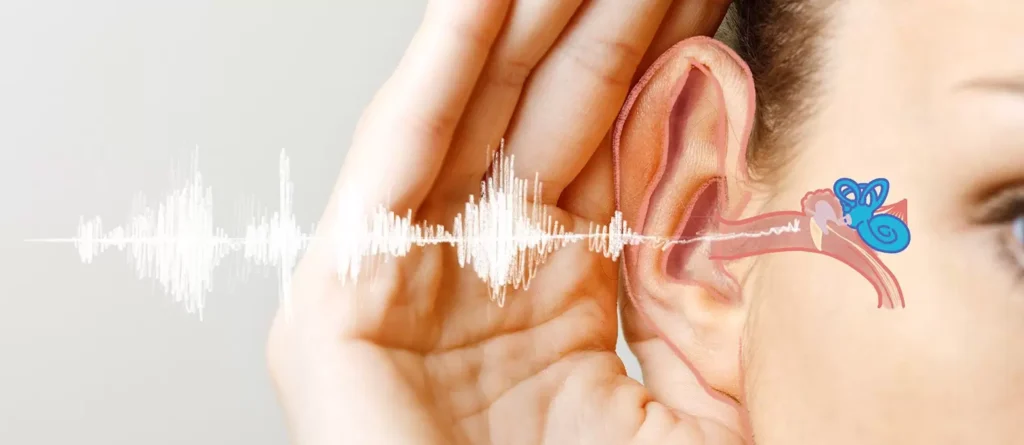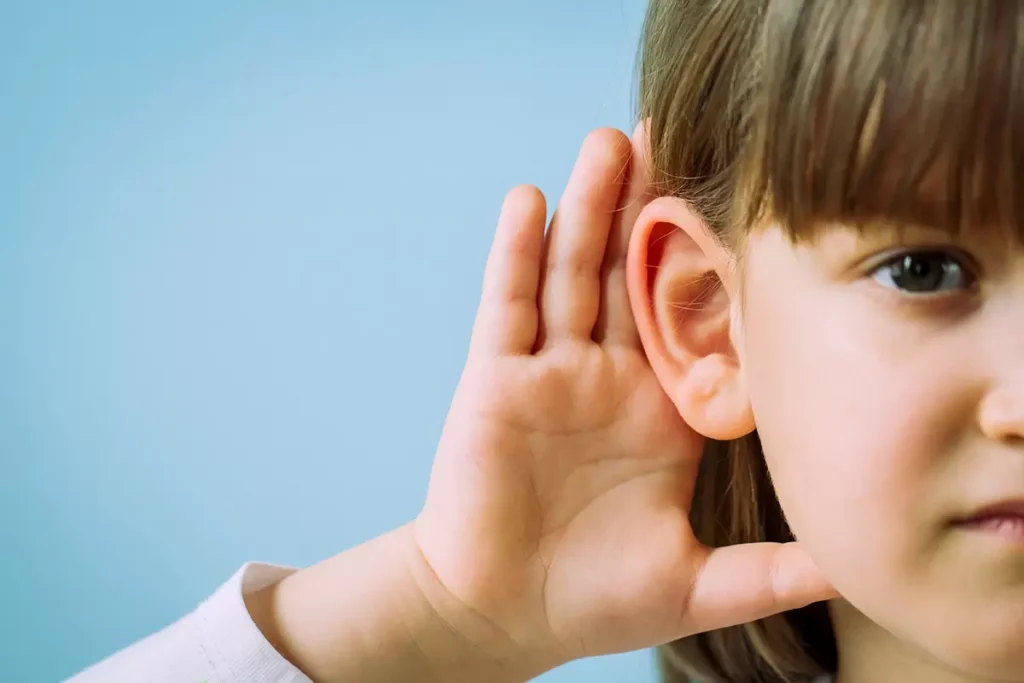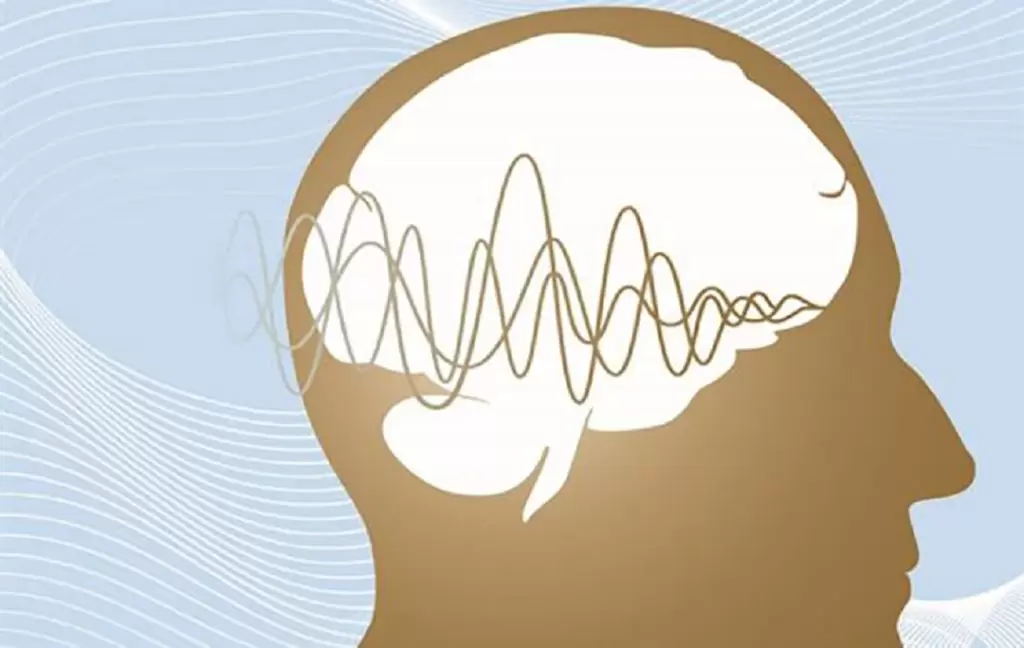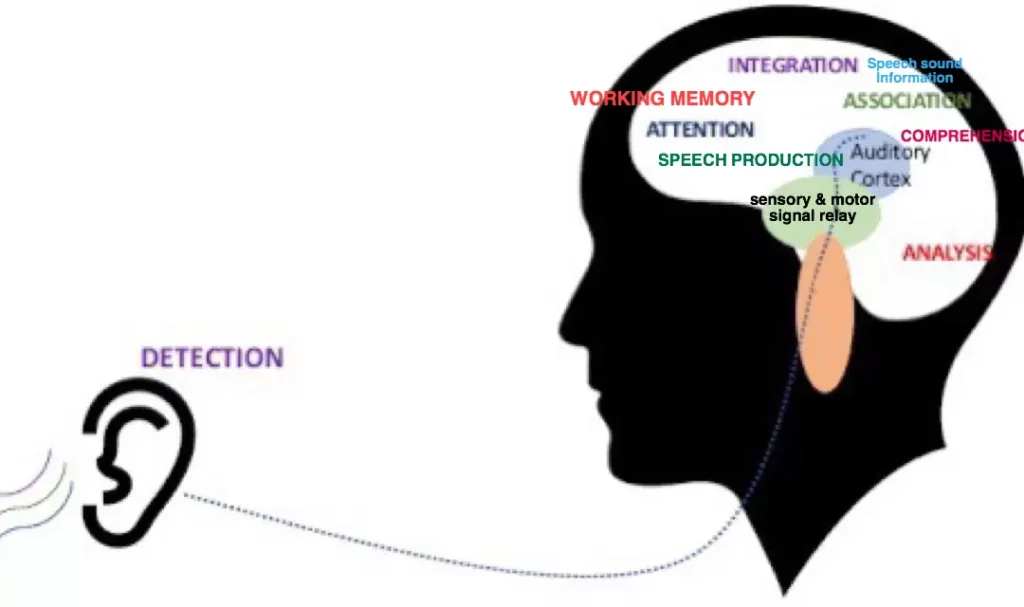Introduction
As a neurodivergent individual you will be familiar with the idea of stimming.
The self-regulatory behaviors used to method sensory input and control emotions.
One unique form of stimming is auditory stimming which involves the manufacturing of sounds as a method of sensory input and self-soothing.
There are 2 types of auditory stimming. Auditory stimming can take a lot of bureaucracy from vocal sounds to non-vocal body-based noises.
It plays a critical function in how neurodivergent people, consisting of people with autism spectrum disease (ASD) or ADHD experience and have interaction with their sensory environments.
By way of know-how the two primary forms of auditory stimming you may benefit more from this commonplace neurodivergent experience.
The 2 Primary Forms of Auditory Stimming
Vocal Auditory Stimming
Vocal auditory stimming refers back to the manufacturing of sounds using the voice. this will occur in a ramification of methods, which includes:
Buzzing: Again and again generating a low, regular hum can offer soothing auditory enter and help alter emotional states.
Throat Clearing: Clearing the throat in a rhythmic sample can create an auditory stimming behavior.
Repeating Sounds or words: Echoing or repeating positive words, sounds, or phrases can function as a form of vocal auditory stimming.
These vocal tics or repetitive vocalizations regularly end up a natural response to sensory processing wishes or emotional dysregulation. The act of producing sounds can help the character self-soothe, focus or manage emotions of hysteria, overstimulation or misery.
Nonvocal Auditory Stimming
Even as vocal auditory stimming includes the voice, nonvocal auditory stimming makes use of the body to create sound. Examples of nonvocal auditory stimming encompass:
Finger Snapping: Rhythmically snapping the arms can offer auditory input and sensory comments.
Tapping: Tapping surfaces, gadgets or one’s very own body can generate sounds that may have a calming or focusing effect.
other body-based totally Sounds: Clapping, stomping, or making other sounds with the palms, feet, or different body parts can serve as a shape of nonvocal auditory stimming.
Like vocal auditory stimming. Those nonvocal behaviors frequently grow to be a manner for neurodivergent people to self-regulate, method sensory records and manage their emotional states.
Assessing the Impact of Auditory Stimming
Auditory stimming, whether or not vocal or nonvocal could have a full-size impact on a man or woman’s daily existence and interactions. On the positive facet it is able to:
- Provide Sensory enter: The sounds generated through auditory stimming can meet a person’s sensory processing needs. Helping them experience grounded and controlled.
- Guide Emotional law: The self-soothing and focusing outcomes of auditory stimming can assist in emotional self-regulation, decreasing feelings of hysteria, frustration or crush.
- Beautify awareness: The repetitive nature of positive auditory stimming behaviors can help a few people listen and live on mission.
however auditory stimming behaviors can also probably have bad influences together with:
- Social demanding situations: Vocal or nonvocal auditory stimming behaviors may be perceived as disruptive or unusual by using others. Leading to social difficulties or misunderstandings.
- Environmental Constraints: Positive auditory stimming behaviors may not be suitable or welcomed in unique environments. Along with quiet classrooms or professional settings.
To navigate these ability challenges it’s critical for neurodivergent individuals and their support systems to increase wholesome coping techniques and self-regulation strategies. this can involve:
- Figuring out triggers or situations that have a tendency to elicit auditory stimming and developing alternative techniques of self-soothing
- Training mindfulness, deep respiratory or other calming sporting activities to control emotions and sensory wishes
- Advocating for hotels and inclusive environments that allow for suitable styles of auditory stimming
- Instructing others approximately the purpose and function of auditory stimming behaviors
By means of understanding the range of auditory stimming experiences and drawing close to them with empathy and attractiveness. We are able to foster more supportive and inclusive environments for neurodivergent people to thrive.
The Impact of Vocal Auditory Stimming
The effect of vocal auditory stimming can be both nice and bad. At the superb facet the act of manufacturing sounds can help the character self-soothe, recognize or control feelings of hysteria, overstimulation or misery. The soothing and calming consequences of vocal stimming can make a contribution to stepped forward emotional law and usual nicely-being.
However, vocal auditory stimming may give challenges in social settings. The repetitive or uncommon nature of those behaviors can occasionally be perceived as disruptive. Unusual through others lead to misunderstandings or social isolation. This can be specially tough for neurodivergent folks that may already face social challenges.
The Impact of Nonvocal Auditory Stimming
Much like vocal stimming, nonvocal auditory stimming could have a tremendous effect on the character. The rhythmic and repetitive nature of these behaviors can provide sensory input. Help emotional regulation and enhance awareness. For some neurodivergent individuals, the tactile and auditory feedback from nonvocal stimming can be deeply calming and grounding.
But the production of nonvocal sounds, especially in positive environments can be perceived as disruptive or irrelevant. In quiet or expert settings the noise generated through nonvocal stimming can be visible as disruptive leading to social or environmental challenges.
Exploring the Impact of Auditory Stimming
Auditory stimming whether or not in the shape of vocal or nonvocal behaviors may have a massive effect on a man or woman’s day by day life and interactions. It is important to recognize the nuances of these self-regulatory behaviors to provide vital aid and create greater inclusive environments.
The Linguistic Impact of Auditory Stimming
Vocal auditory stimming inclusive of humming, throat clearing, or repeating sounds. May have a linguistic impact on a person’s communique and language improvement. The repetitive nature of these behaviors may sometimes intrude with fluid speech or disrupt the natural drift of communication. This can pose challenges in social settings and educational or professional environments wherein clean and powerful communication is essential.
The Socioemotional Impact of Auditory Stimming
The effect of auditory stimming each vocal and nonvocal extends beyond the linguistic realm. Those behaviors can have a massive impact on a person’s socioemotional nice-being. Vocal or nonvocal stimming may be perceived as uncommon or disruptive by others. Mainly to misunderstandings, social isolation and feelings of exclusion. This could in addition make contributions to emotional dysregulation and challenges in forming and keeping meaningful relationships.
The Cognitive Impact of Auditory Stimming
Apparently auditory stimming also can have a cognitive impact on the man or woman. The repetitive nature of these behaviors can have a focusing and calming effect allowing some neurodivergent people to higher listen and have interaction in cognitive tasks. The sensory feedback furnished through auditory stimming may also enhance attention memory and average cognitive functioning in sure contexts.
Navigating the Multifaceted Impacts of Auditory Stimming
To cope with the various effects of auditory stimming. A multifaceted approach is regularly important. This will contain developing personalized coping techniques, advocating for hotels and fostering more expertise and popularity within social and educational environments. Through acknowledging the nuanced effects of auditory stimming, we are able to create more inclusive and supportive spaces for neurodivergent people to thrive.
The Challenges Associated with Auditory Stimming
At the same time as auditory stimming may have high quality influences on individuals. It is able to also present a number of demanding situations that must be navigated with empathy and expertise.
Social and Interpersonal Challenges
The repetitive or uncommon nature of auditory stimming behaviors may be perceived as disruptive or irrelevant by way of others in social settings. This may lead to misunderstandings, social isolation and problems in forming and preserving meaningful relationships. Navigating social situations and balancing the need for self-law with the expectations of the surrounding can be a constant project for neurodivergent people.
Environmental Challenges
Certain environments which include quiet or expert settings may be specifically difficult for folks that have interaction in auditory stimming. The noise generated through vocal or nonvocal stimming can be seen as disruptive. Mainly to conflicts with social norms and potential consequences. This will restrict possibilities for training, employment and community participation. Similarly exacerbating the challenges confronted by way of neurodivergent people.
Emotional and Psychological Challenges
The social and environmental challenges related to auditory stimming can take a sizable emotional and psychological toll on individuals. Feelings of disgrace, anxiety and isolation can stand up to negative impact on mental health. Overall proper-being navigating the stability among self-law and societal expectancies may be a steady supply of stress and emotional turmoil.
Linguistic and Communication Challenges
As noted earlier the repetitive nature of vocal auditory stimming can intrude with effective communication and language improvement. This can pose challenges in academic, professional and social settings. In which clear and concise communique is frequently extraordinarily valued. Neurodivergent people may discover it hard to express themselves effectively or interact in fluid conversations leading to similarly social and educational limitations.
In the long run, the key to efficiently dealing with auditory stimming is a multifaceted method that addresses the person’s sensory, emotional and social needs. Via taking part with caregivers, experts and the person themselves powerful coping techniques may be identified and carried out to help the person’s nice-being and facilitate their successful integration into various settings.
Promoting Acceptance and Understanding of Auditory Stimming
Further to the implementation of coping techniques, promoting popularity and understanding of auditory stimming is essential for individuals who have interaction on this repetitive self-stimulatory behavior. Via fostering an extra expertise and attractiveness of auditory stimming in the individual’s social and educational environments. The demanding situations they face can be mitigated and that they may be better supported of their universal proper-being.
Increased education and awareness
One crucial component of selling popularity is elevated schooling and attention. Via offering records and schooling to teachers, friends and the wider community the misconceptions and stigma surrounding auditory stimming can be addressed. This can contain educating individuals on the neurological basis of those behaviors. The function they play in sensory regulation and the demanding situations confronted via folks that have interaction in them.
Implementation of inclusive policies and practices within educational and social settings
Moreover, the implementation of inclusive regulations and practices inside educational and social settings can substantially contribute to the acceptance and integration of people with auditory stimming. This could consist of the improvement of clean suggestions for accommodating those behaviors and the supply of specific spaces for self-regulation. The adoption of a greater holistic and trauma-informed method to addressing difficult behaviors.
FAQ’s
What is Auditory stimming?
These involve your hearing and sounds, such as snapping your fingers, repeatedly touching your ears, or listening to the same sound over and over.
What is the difference between vocal stimming and verbal stimming?
Vocal stimming involves the use of sounds other than talking, whereas verbal stimming usually involves speech.
What is an example of vocal stimming?
Giggling, singing, excessive throat clearing, the repetition of specific words, and the making of repetitive sounds (such as humming or murmuring).
What is auditory autism?
A type of hearing loss not related to physical damage to the ears, but to what the brain does with incoming sound.
Conclusion
Auditory stimming in its vocal and nonvocal paperwork is a common self-regulatory behavior amongst neurodivergent people.
It serves an important function in processing sensory centers and dealing with emotional states.
While auditory stimming can sometimes give social or environmental demanding situations.
It’s far a natural expression of sensory variations and should be approached with knowledge and lodging.
With the aid of teaching ourselves about the 2 types of auditory stimming we are able to gain deeper insight into the various sensory reviews of the neurodivergent community.
This knowledge can assist us create greater inclusive spaces, expand powerful coping techniques and foster more attractiveness of all varieties of human neurodiversity.

